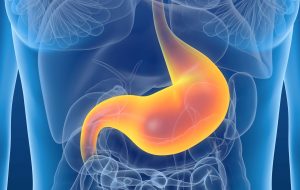Cutting carbs can be a game-changer for many looking to manage their weight or improve their health. However, knowing exactly what to avoid can be a bit tricky. While it might be tempting to think of carbs solely as bread or pasta, they sneak into various foods and drinks. Let’s dive deeper into the types of foods that might derail your low-carb efforts and explore some practical alternatives that will keep your diet flavorful and satisfying.
Sugary Drinks
Sugary drinks like sodas, fruit juices, and sweetened teas are often the biggest culprits in high-carb diets. Did you know that a single can of soda can contain over 30 grams of sugar? That’s quite a lot when you’re trying to cut back! Instead of reaching for that sugary drink, consider making your own infused water. Simply add slices of cucumber, lemon, or berries to a pitcher of water and let it sit for a few hours. This not only helps you stay hydrated but also satisfies your taste buds without any added sugars.
White Bread
White bread, whether it’s in the form of a sandwich, toast, or a burger bun, is made from refined grains. These grains lack the fiber and nutrients found in whole grains, leading to a rapid increase in blood sugar levels. Switching to whole grain or sprouted bread can make a world of difference. Try pairing your avocado toast with a slice of sprouted bread, which offers more fiber and protein, helping you feel fuller for longer.
Pasta
Traditional pasta is beloved by many but is loaded with carbohydrates. For those looking to enjoy pasta dishes without the carb overload, spiralized vegetables like zucchini or squash can be a wonderful substitute. Alternatively, shirataki noodles, made from konjac yam, are incredibly low in carbs and calories. They might take a little getting used to, but with the right sauce and seasoning, they can mimic the texture of regular pasta quite well.
Rice
Rice is a staple in many cuisines around the world, but white rice, in particular, is high in carbs. Cauliflower rice has gained popularity as a low-carb alternative. Simply pulse fresh cauliflower florets in a food processor until they resemble rice and then sauté with a bit of olive oil. Broccoli rice offers another nutritious option, providing a similar texture and a unique flavor profile that complements many dishes.
Candy and Chocolate Bars
Candy and chocolate bars are often packed with sugars and carbs. If you’re craving something sweet, look for sugar-free candy options available in most health food stores. Dark chocolate with at least 70% cocoa content is another great alternative. Not only does it have less sugar, but it’s also rich in antioxidants. Pair a square of dark chocolate with a handful of nuts for a satisfying, low-carb snack.
Processed Snack Foods
Chips, crackers, and other processed snacks are often loaded with refined carbs and unwanted additives. For a healthier snack alternative, stock up on nuts and seeds. Almonds, walnuts, and sunflower seeds are not only low in carbs but also offer healthy fats and proteins. If you’re in the mood for something crunchy, try making kale chips at home with just a little olive oil and sea salt.
Breakfast Cereals
Breakfast cereals can be deceiving. Many are marketed as healthy but are often high in sugars and refined carbs. Instead, consider starting your day with oatmeal or Greek yogurt. Rolled oats can be prepared overnight with almond milk and topped with nuts and berries for a nutritious, low-carb breakfast. Greek yogurt, on the other hand, is rich in protein and pairs well with a small handful of berries and a sprinkle of chia seeds.
Beer
For those who enjoy an occasional drink, beer can be a sneaky source of carbs due to its malt content. When you’re cutting carbs, try opting for light beer, which typically contains fewer carbs than regular beer. Spirits like vodka or gin mixed with soda water and a squeeze of lime can also be a refreshing choice that fits into a low-carb lifestyle.
Potatoes
Potatoes are a starchy vegetable high in carbs. They often serve as a side dish in various meals, but there are plenty of delicious alternatives. Cauliflower can be mashed for a creamy side dish, while zucchini can be thinly sliced and baked as chips. Turnips, when roasted, can also provide a satisfying alternative to traditional potato dishes.
Ice Cream
Most commercial ice creams are packed with sugar, making them a no-go for those cutting carbs. However, you don’t have to give up this creamy treat entirely. Many stores now offer low-carb ice cream versions made with sugar substitutes like erythritol or stevia. If you’re feeling adventurous, try making a batch at home using coconut milk and flavored extracts.
Fruit Juices
Even 100% fruit juices can be high in natural sugars and carbs. Eating whole fruits like apples or berries is a far better option. They provide fiber, which helps regulate blood sugar levels and keeps you feeling full. A bowl of mixed berries with a dollop of Greek yogurt can be a refreshing and nutrient-packed snack.
Processed Meats
Processed meats such as sausages and deli meats might contain hidden sugars and carbs due to additives. Whenever possible, opt for fresh cuts of meat. If you’re buying from the deli, look for options labeled as sugar-free. Preparing your own meats at home allows you to control the ingredients and ensure you’re sticking to your dietary goals.
Dried Fruits
Dried fruits, while convenient, are concentrated sources of sugar and carbs. A small serving of dried apricots or raisins can quickly add up in carbs. Instead, reach for fresh berries, which are lower in sugar and provide essential vitamins and antioxidants. Pairing them with nuts can make for a satisfying, low-carb snack that won’t derail your diet.
Practical Tips for Cutting Carbs
Let’s explore a few practical tips to help you maintain a low-carb lifestyle without feeling deprived:
- Meal Prep: Planning your meals in advance can save you from making poor food choices when you’re hungry. Prepare a batch of grilled chicken, roasted vegetables, and boiled eggs at the start of the week for easy, low-carb meals.
- Read Labels: Many foods that seem healthy can contain hidden carbs. Get into the habit of reading nutrition labels, keeping an eye out for sugars and refined carbs.
- Experiment in the Kitchen: Try recreating your favorite high-carb dishes using low-carb ingredients. Whether it’s making cauliflower crust pizza or zucchini lasagna, the possibilities are endless.
- Stay Hydrated: Sometimes we mistake thirst for hunger. Drink plenty of water throughout the day, and consider adding a slice of lemon or cucumber for a refreshing twist.
- Mindful Eating: Pay attention to portion sizes and eat slowly to truly savor your food. This practice not only helps you enjoy your meals but also allows you to recognize when you’re full.
Common Mistakes to Avoid
Embarking on a low-carb journey can be rewarding, but it’s not without its challenges. Here are a few common mistakes to watch out for:
- Overeating Low-Carb Foods: Just because a food is low in carbs doesn’t mean you can eat unlimited amounts. Be mindful of portion sizes and overall caloric intake.
- Ignoring Nutrient Balance: While cutting carbs, ensure you’re getting enough protein and healthy fats. They play a crucial role in keeping you satisfied and maintaining muscle mass.
- Too Much Focus on Processed Low-Carb Products: The market is flooded with low-carb snacks and substitutes. While they can be convenient, whole foods like vegetables, nuts, and lean proteins should be the foundation of your diet.
- Lack of Fiber: Cutting out carbs can sometimes lead to lower fiber intake. Incorporate plenty of non-starchy vegetables and seeds like chia and flax to keep your digestive system happy.
Remember, transitioning to a low-carb lifestyle is a personal journey, and what works for one person might not work for another. It’s about finding a balance that aligns with your health goals and preferences, keeping you happy and healthy in the long run.



